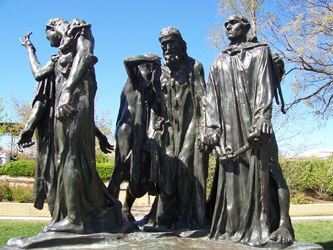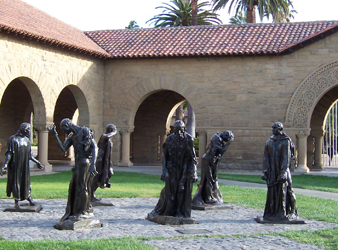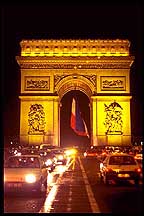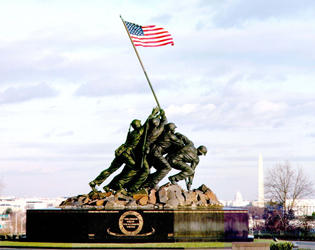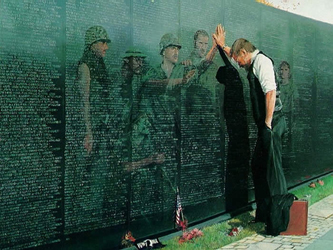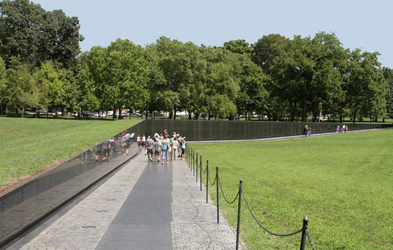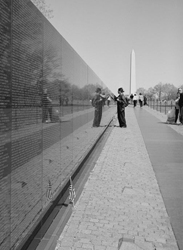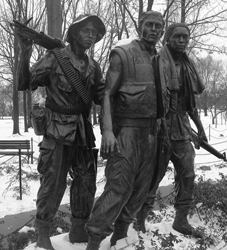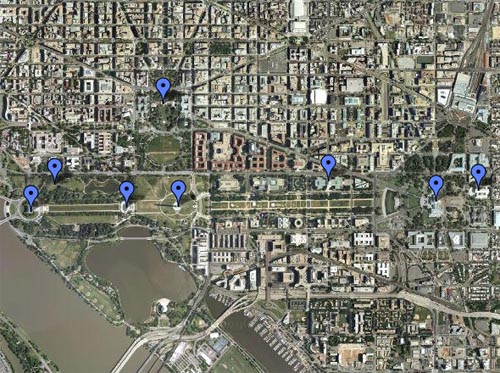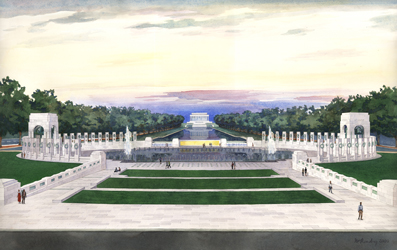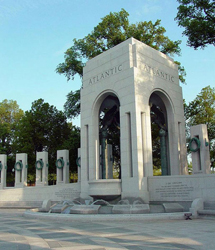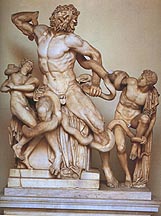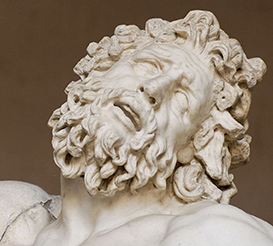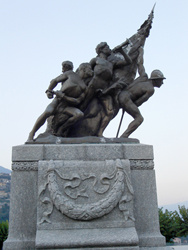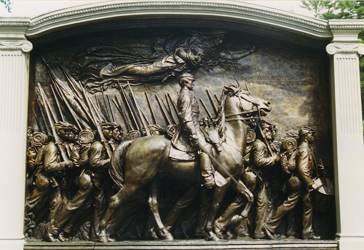Art Home | ARTH Courses | ARTH 200 Assignments
Auguste Rodin
The Burghers of Calais
Completed in 1888, The Burghers of Calais presents Rodin's modernist response to public sculpture. It is based on events from 1347 during the Hundred Years' War. The French port city of Calais was under siege by the English for over a year. Facing starvation, the city agreed to a surrender to the English forces. King Edward offered to spare the city if any of six leading citizens of Calais gave themselves up. Edward demanded that they walk out almost naked and wearing nooses and be carrying the keys to the city. One of the most prominent citizes, Eustache de Saint Pierre agreed first. Rodin represents Eustache gesturing the others to follow. The burghers expected to be executed, but the English Queen, Philippa of Hainault, intervened with her husband. For more see the Wikipedia article.
Rodin's group can be seen as a response to traditional public sculptures like François Rude's Marseillaise more formally known as Departure of the Volunteers of 1793, created between 1833 and 1836 as part of the Arc de Triomphe in Paris:
Also consider the comparison between the Iwo Jima Memorial and the Vietnam Veterans Memorial designed by Maya Lin:
When Maya Lin's memorial was first opened there was a major controversy. The absence of the traditional images of heroic warriors made the memorial seem "nihilistic." It was decided to add the additional memorial of the Three Soldiers which was created by Frederick Hart and unveiled in 1984. What do you make of this addition? Note the intention of being inclusive by showing a white, black, and hispanic serviceman. While being inclusive, the monument does not treat the figures equally. |
World War II Memorial
(see Wikipedia Article)
Comparisons
Auguste Saint-Gaudens, The Shaw Memorial, 1884-1897, Boston Commons. (see excellent webpage and video dedicated to the Shaw Memorial) |
